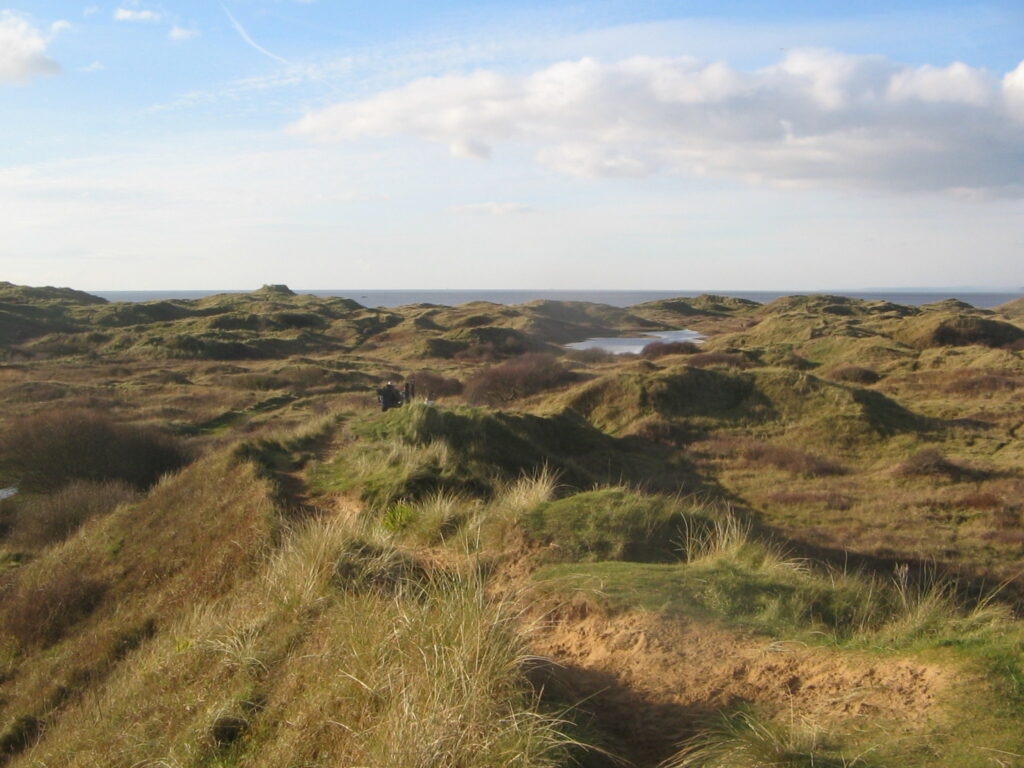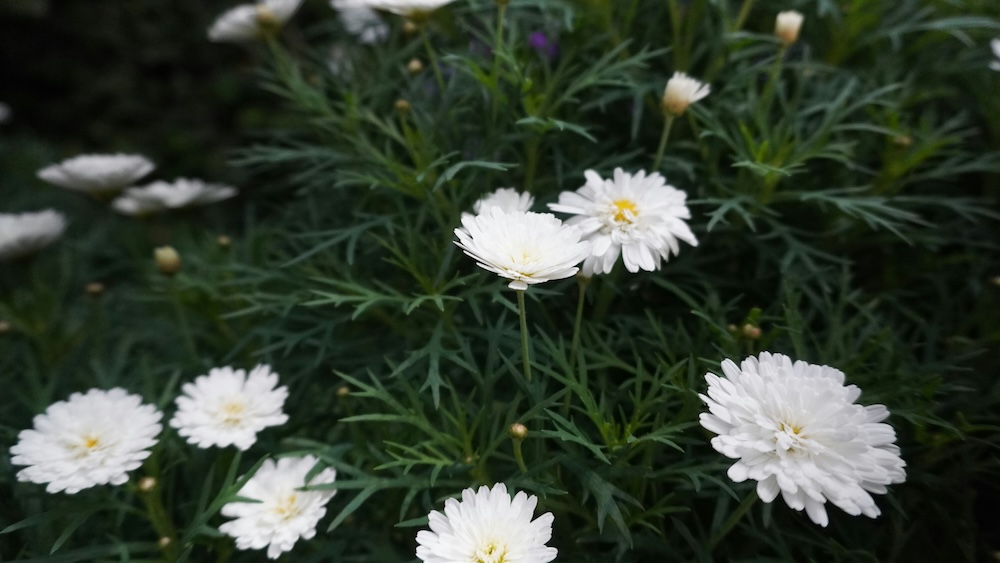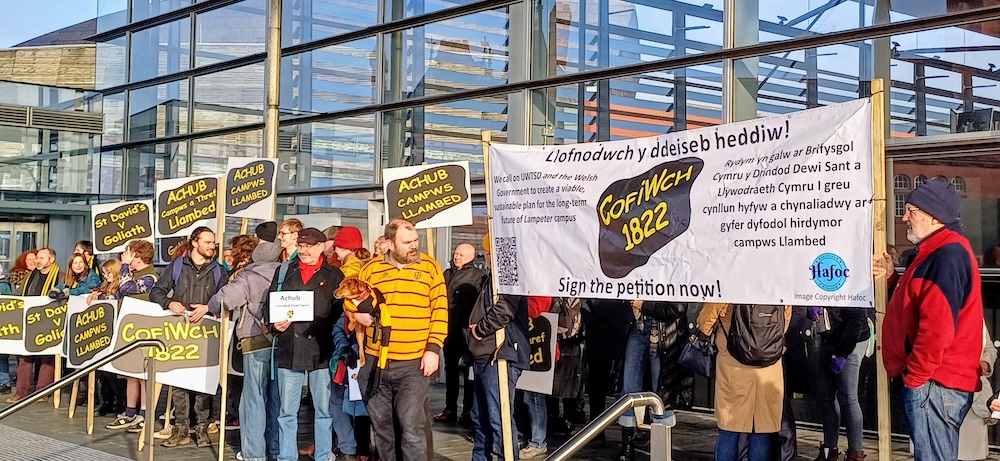Laura Davies, Kath Hewitt, Julie Creer and Hannah Lee showcase an innovative project to protect Wales’ sand dunes.
Sand dunes are wild, iconic landscapes. They are biodiversity hotspots, where carpets of orchids survive alongside songbirds, butterflies and a wide array of endangered insects.
The hills of sand are built by the wind, blown out and built again. Hardy plants begin the sequence of dune formation by the strandline in a process called succession, then high, mobile ‘yellow dunes’ develop along with wetter areas known as dune slacks and flower-rich dune grassland further inland – a natural mosaic of diverse habitats.
Sand dunes are listed as the habitat most at risk in Europe for biodiversity loss
The dunes of Wales can be explored at all times of year and can be found right along the Welsh coastline. In the north-east are Gronant and Talacre dunes; with the famous Newborough Warren and a host of other dunes dotted along the Anglesey coast. Further south is the iconic Morfa Harlech, overlooked by a castle that once stood by the seafront, Stackpole in Pembrokeshire. Onwards to the Gower Peninsula you will find cliff top or ‘perched’ dunes and the Oxwich National Nature Reserve, and beyond the expansive dunes of Kenfig and Merthyr Mawr.
Dunes are only found on the narrow strip between land and sea and over the years many have been lost to housing, industry, tourism or farming so now they cover only 0.003% of Wales’ land mass. Many dunes are now legally protected but rare wildlife is still disappearing – over the last 80 years, nearly 90% of the open sand has been replaced by dense grass and scrub. The dunes have become overly stabilised and dune sand is no longer able to move freely. Sand dunes are therefore listed as the habitat most at risk in Europe for biodiversity loss.
This change has been caused by factors such as; the planting of marram grass, the introduction of conifer plantations and non-native plant species (often done originally to stabilise the dunes); lack of traditional grazing; a declining grazing rabbit population and nitrogen enrichment due to air pollution.
Active management is now needed to help restore the natural dynamism of sand dunes.
Conservation in action
There are two large sand dune conservation projects currently running. These projects are proactively managing a number of sand dune systems throughout Wales for the benefit of wildlife, people and communities.
First, Sands of LIFE is a major project led by Natural Resources Wales, funded by the European LIFE programme and Welsh Government. The project aims to restore and rejuvenate 10 sand dune sites within 4 Special Areas of Conservation in Wales.
Dynamic Dunescapes is funded by the National Lottery Heritage Fund and the European LIFE fund. The project is a partnership between Natural England, Plantlife, National Trust, Natural Resources Wales and The Wildlife Trusts. The project aims to 7,000 hectares of coastal sand dune across restore 22 sand dune sites across England and 12 in Wales.
Both projects work alongside communities and local partner organisations to deliver large-scale practical restoration work. In addition, Dynamic Dunescapes facilitates training and volunteering on the dunes for visitors and local community groups.
The work required at each sand dune site is different, as each dune system is unique. Prior to the beginning of work, specialist surveys are undertaken to determine what management is appropriate at each location.
To promote the rejuvenation of sand dunes, Dynamic Dunescapes and Sands of LIFE use a range of active management techniques. Turf stripping and re-profiling of the dune landscape achieves the remobilisation of sand, allowing it to move once again. Through the creation of notches (gaps) in the front of the dunes wind is able to transport sand inland, rejuvenating areas of the dunes within and beyond the foredunes.
By digging shallow scrapes in dune slacks (low-lying hollows in the dunes) we can remove dense grasses and organic matter from the surface and expose bare sand. This allows specialist pioneer species (early settling plant species) to re-establish without being outcompeted by more vigorous vegetation. The scraping work can also recreate seasonally wet habitat, which has dried out due to changing land use, forestry and invasive species which absorb water. Excavating close to the underlying water table allows these areas to become wet in winter and spring, making perfect conditions for specialised and rare dune plants such as the Petalwort (Petalophyllum ralfsii), and a variety of orchids, as well as areas for amphibians to breed.
Gofod i drafod, dadlau, ac ymchwilio.
Cefnogwch brif felin drafod annibynnol Cymru.
In addition, the dunes are being actively managed through the sustainable grazing by livestock and rabbits. Grazers eat in different ways. Cattle use their tongues, wrapping it around plants and pulling them up, while sheep move slowly, nibbling the vegetation down. As well as grazing, rabbits dig and expose bare sand where insects will burrow and pioneer plants will settle. The activities of these animals promote a diversity of plant heights, supporting the recovery of biodiversity in the dunes. The projects have erected new fencing to ensure that the livestock remain safe and rabbits are encouraged by mowing specific areas and creating artificial warrens.
Dunes aren’t only a place for wildlife to thrive, but for people to enjoy, exercise and connect with nature, too.
Other work includes cutting scrub, removing invasive alien species and monitoring the recovery of these habitats. Through active management the dunes are being restored and rejuvenated, facilitating the right conditions for dynamic dune processes to occur and creating habitat for rare dune species to thrive. This will increase the resilience of these sand dunes for the future.
Active conservation practices have led to genuine success stories. Protected species such as the Fen Orchid (Liparis loeselii) have declined dramatically over the years. Fen Orchid is a very rare type of orchid which grows in dune slacks. The population in Wales, which used to exceed 10,000 plants, had dwindled to such an extent that it had become extinct in all but one of its sites, Kenfig National Nature Reserve, near Bridgend. However, the Fen Orchid has been re-discovered this summer at another South Wales site, Laugharne-Pendine Burrows, due to years of carefully planned conservation management by the Sands of LIFE project and the Ministry of Defence. It was last recorded at this site nearly 20 years ago and this recent discovery shows how successful active management is.
Dunes aren’t only a place for wildlife to thrive, but for people to enjoy, exercise and connect with nature, too. The conservation of nature and our connection to it go hand in hand in achieving ambitious restoration goals. Sand dunes might be considered a mysterious part of our landscape, usually passed through on our way to the beach. But these habitats hold vast secrets, just waiting to be discovered.
Working closely with local communities and visitors in Wales are core aims of both the Dynamic Dunescapes and Sands of LIFE projects. This involves creating opportunities for people to explore the dunes, to learn about the special wildlife of the dunes and sharing their own stories and expertise. Throughout the year, across all the project sites there are guided walks focusing on different points of interest on the dune, from bees to plants and fungi to beetles.
In addition to guided walks, a range of more hands-on volunteering activities are also offered, such as the Dynamic Dunescapes citizen science project. Focused on monitoring the ongoing conservation work, volunteers throughout Wales have been training and taking part in vegetation, dune profile, and photographic monitoring at the various restoration sites. The data collected will help guide future management. Through collaboration with local partners, Dynamic Dunescapes facilitates training and support for volunteers interested in monitoring reptiles, butterflies, bumblebees and other coastal species in the dunes.
It’s also possible to explore the dunes from the comfort of your own sofa, through online events focused on coastal species and the colourful history of sand dunes to short videos about ongoing work and the wildlife of the dunes such as these from the Gower and Pembrey
So if you’re feeling inspired, next time you visit the beach, pause in the dunes, surrounded by plants and listen to the song of skylarks, linnet and stone chats as they fly overhead. For ideas for activities or to learn more about the ongoing conservation actions, visit the project websites: Dynamic Dunescapes; Sands of LIFE
All articles published on the welsh agenda are subject to IWA’s disclaimer.





